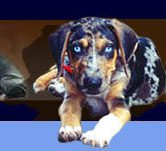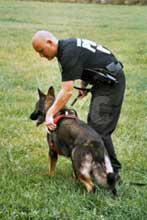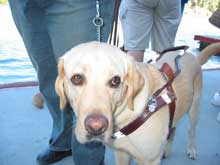.
.
.
.
Search and rescue dogs: are used to locate missing people and criminals or to find living humans or cadavers after tornadoes, earthquakes and other disasters. Search and rescue is divided into field work and disaster work. Field work comprises tracking, trailing, air scent and water search. For disaster work specifically trained disaster dogs and avalanche dogs are used. Different breeds of dogs are usually used for these specific tasks. Cadaver dogs are used exclusively to locate human remains.
Trailing dogs follow a trail composed of small particles of tissue of skin cells left by the person as she or he travels and that corresponds to the scent article they were given as a reference. They can not work if no scent sample is available.
In that case, tracking dogs are used, for example when pursuing criminals or in rescue operations. The tracking dog physically tracks the path of a person.
Air Scent dogs also work without scent article, but by picking up traces of human scent that are drifting in the air, rather than following a track close to the ground. This type of dog will generally not be able to discriminate between scents of different persons, so the presence of other people within the same area may affect the results. They are particularly useful in disaster work (collapsed building search) to detect human scent within and around a debris pile. They usually work off lead.
Water search dogs focus their attention on the bodiy gasses that rise up from under the water. They work in team with their handler from a boat or from the shore-line, and with a diver ready to search the area indicated by the dog.
Cadaver dogs react to the specific scent emitted by a dead person. They are able to detect very minute pieces of human remains (whether above ground or buried) and even blood drops.
Disaster dogs are trained to find humans in very unnatural settings as they are found after tornadoes, earthquakes and other disasters. They must be able to work in small, confined spaces and on unstable surfaces without being distracted from their mission. Disaster dog must be relatively compact and short-haired, and capable to work off lead. Shepherds are most often used.
Avalanche dogs are trained to detect human presence burried under many feet of snow.
The most familiar type of service dog is the guide dog that assist blind or visually impaired people. There are also hearing dogs for the deaf, and mobility assist dogs, who open/closes doors, pull a person's wheelchair, walker dogs, who help the handler walk by balancing or acting as a counter balance, alert dogs, who are trained to hit a button to automatically
dial 911 in urgent cases, psychiatric service dog, who assist persons with a mental disability or phobias.
In the 1970s, social workers became aware that assistance dogs served not only the obvious 'physical role' of replacing a missing sense or impaired mobility, but also had a positive effect on the overall condition and self esteem of their owners. This discovery lead to the development of animal-assisted activities and animal-assisted therapies (see further).












